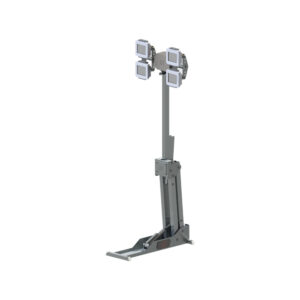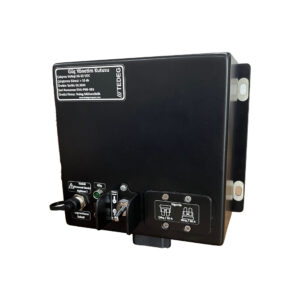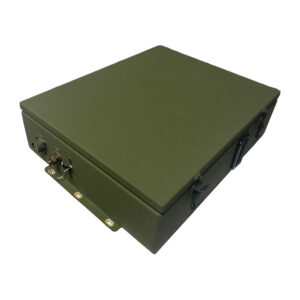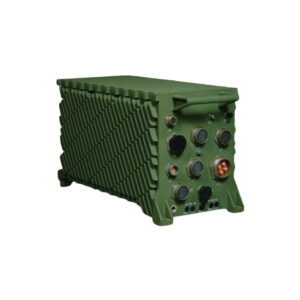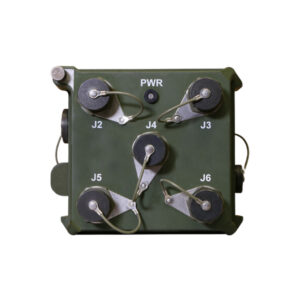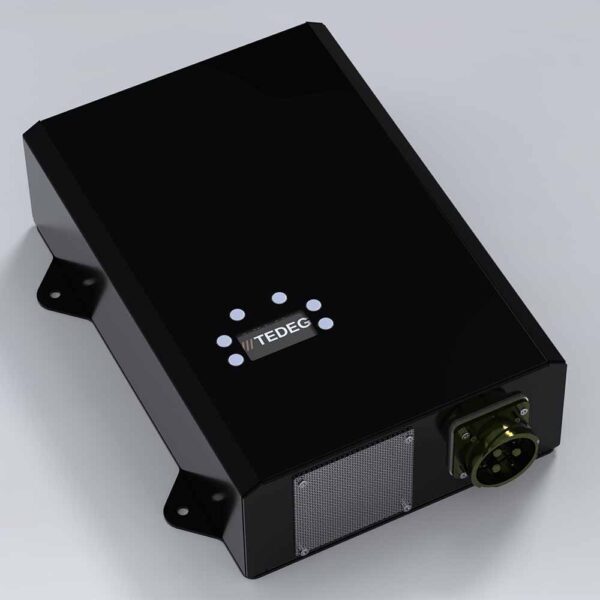
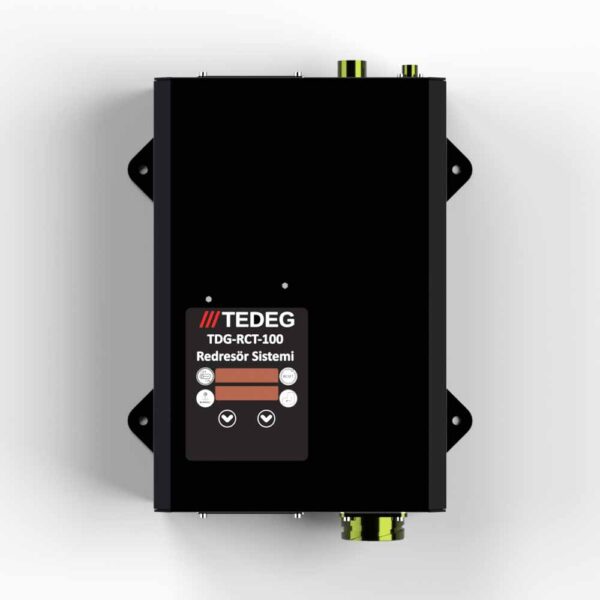
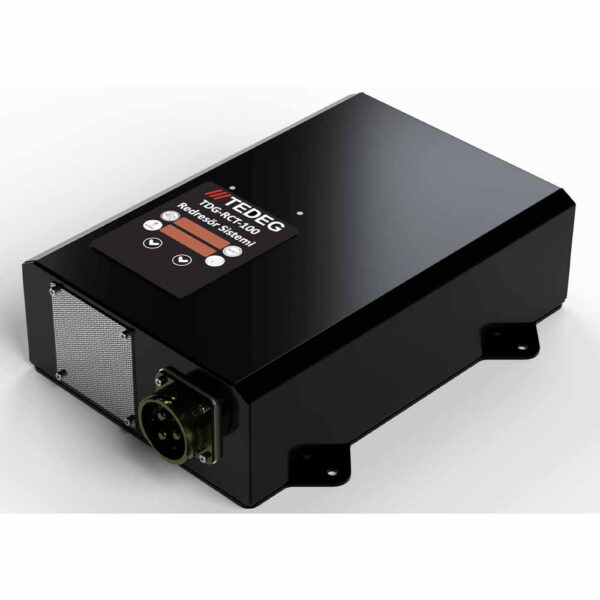
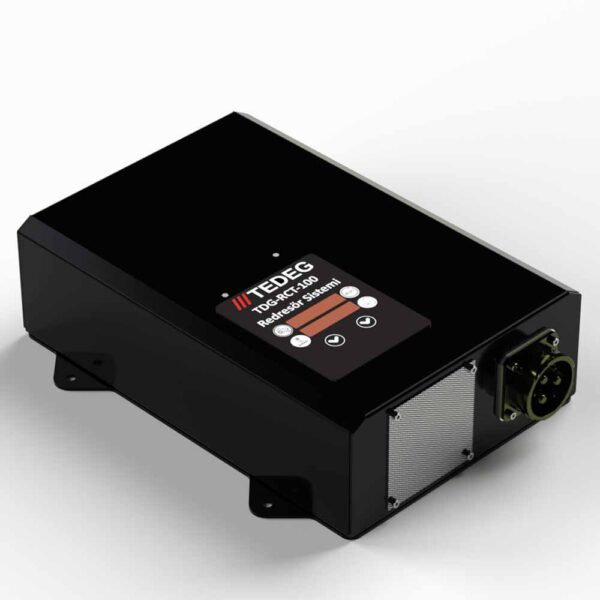
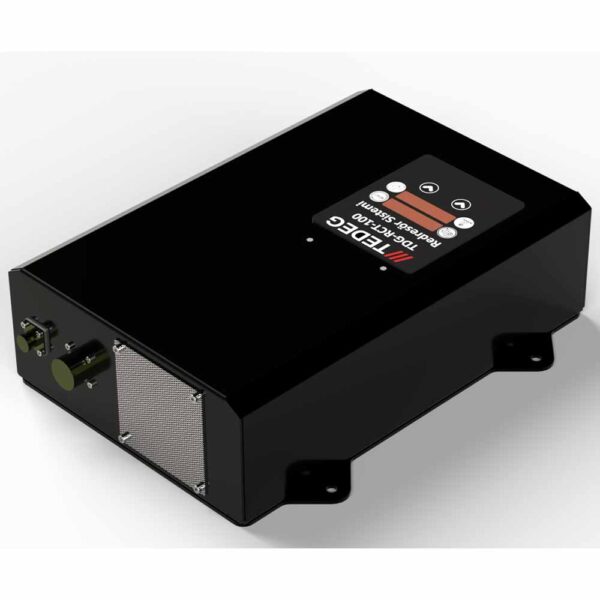
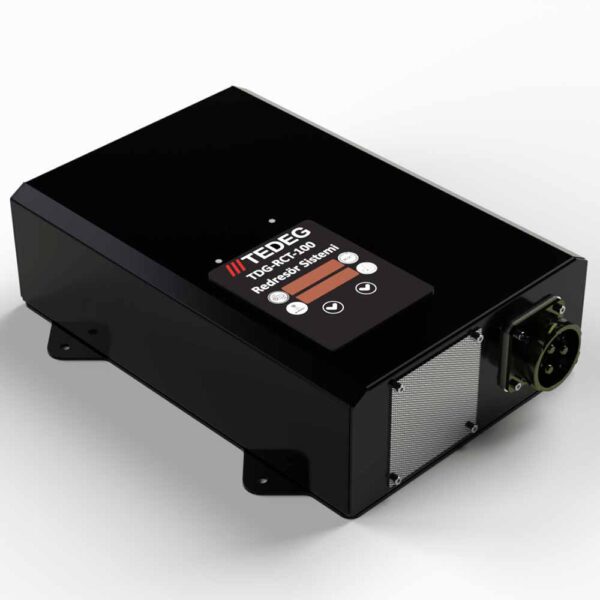
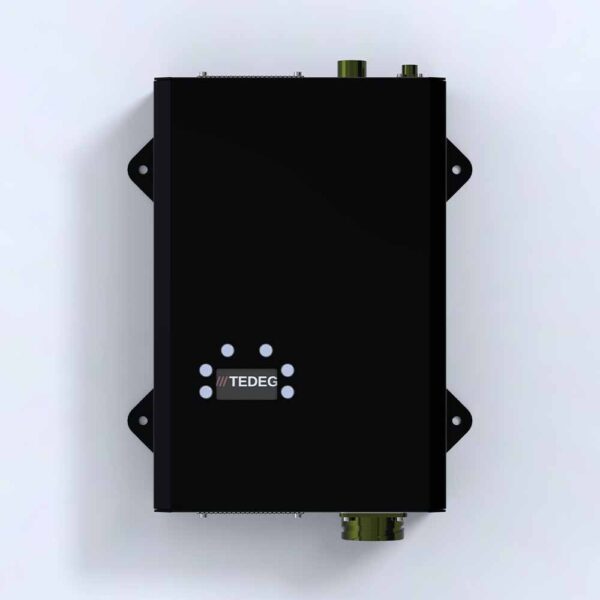
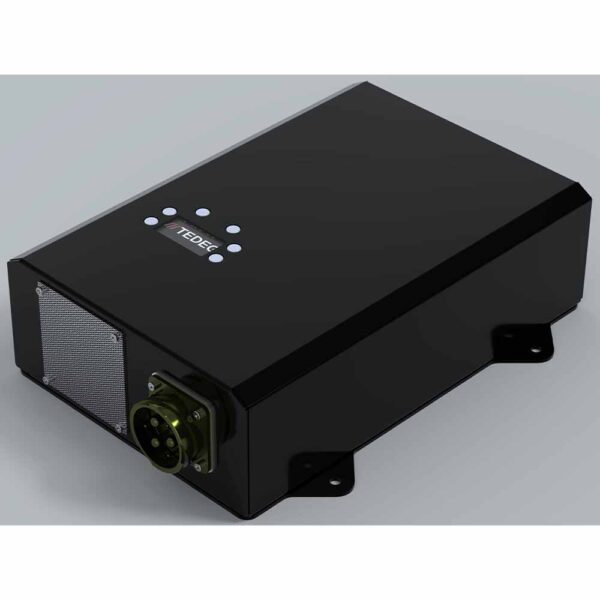
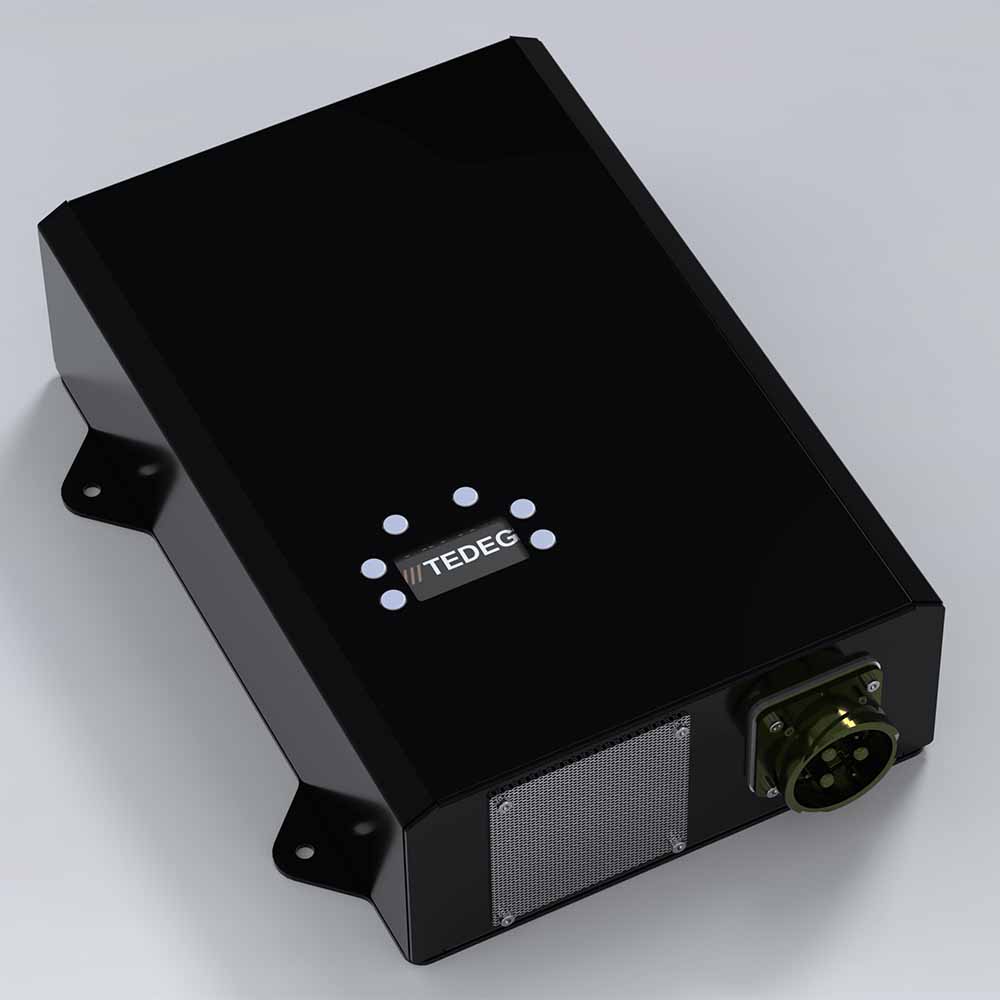
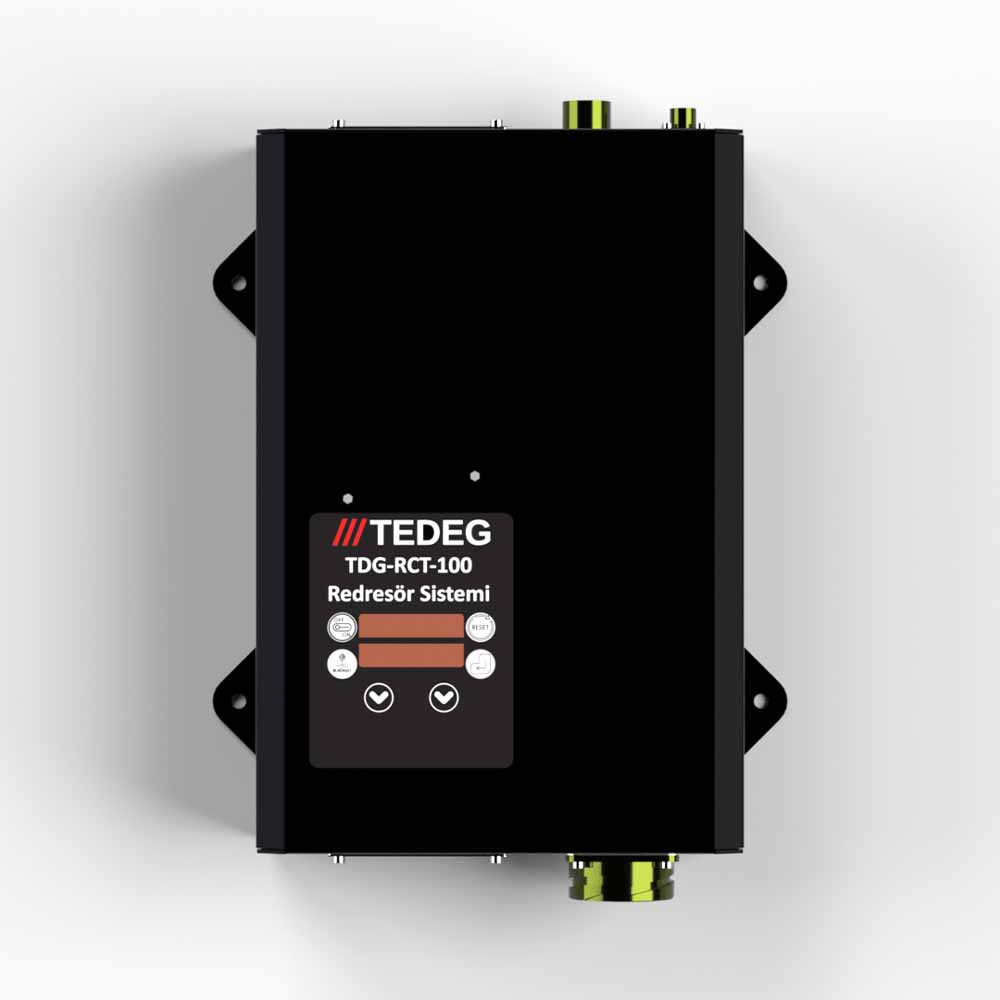
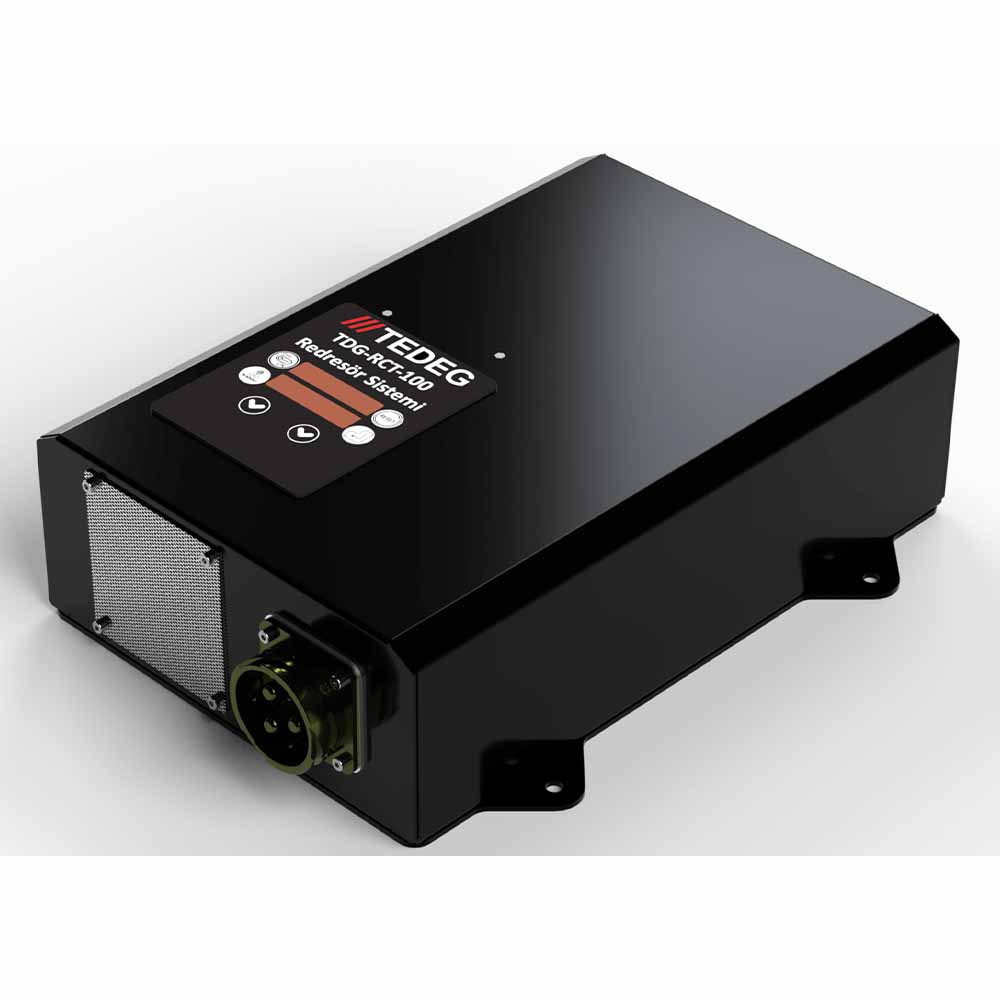
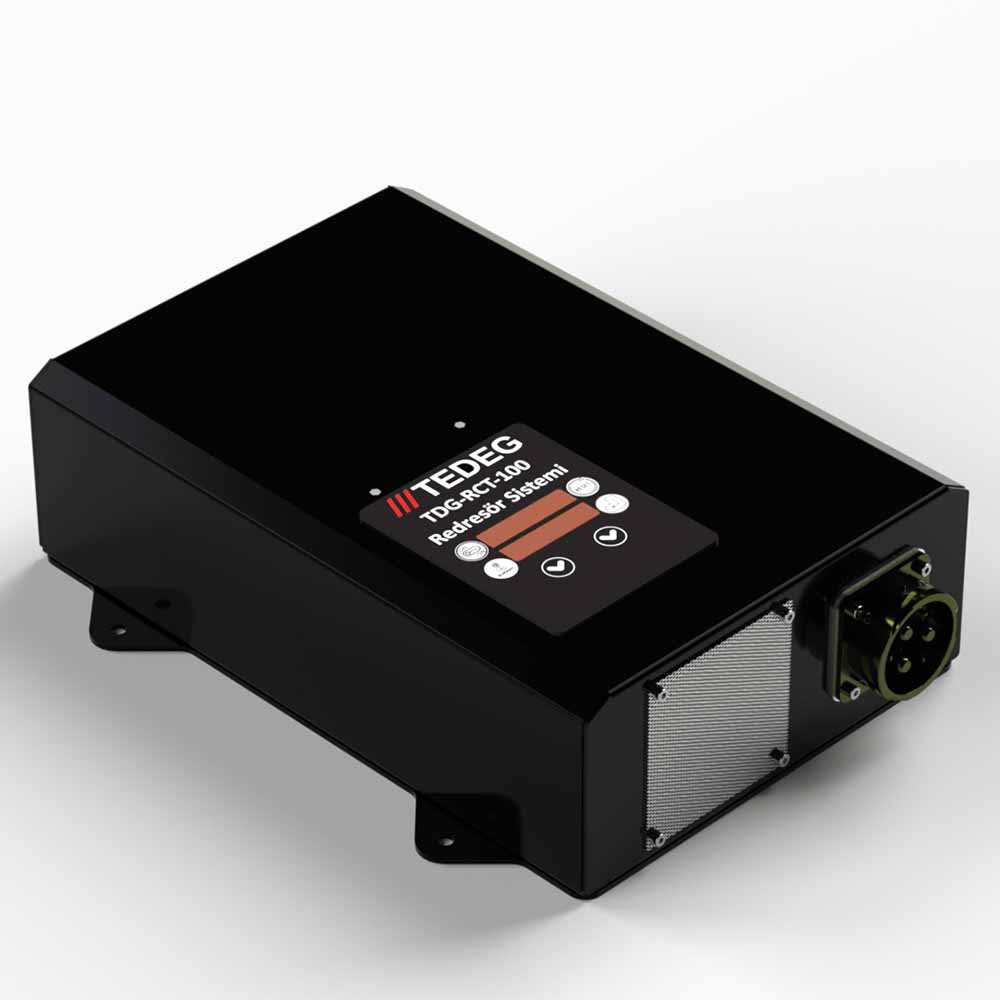
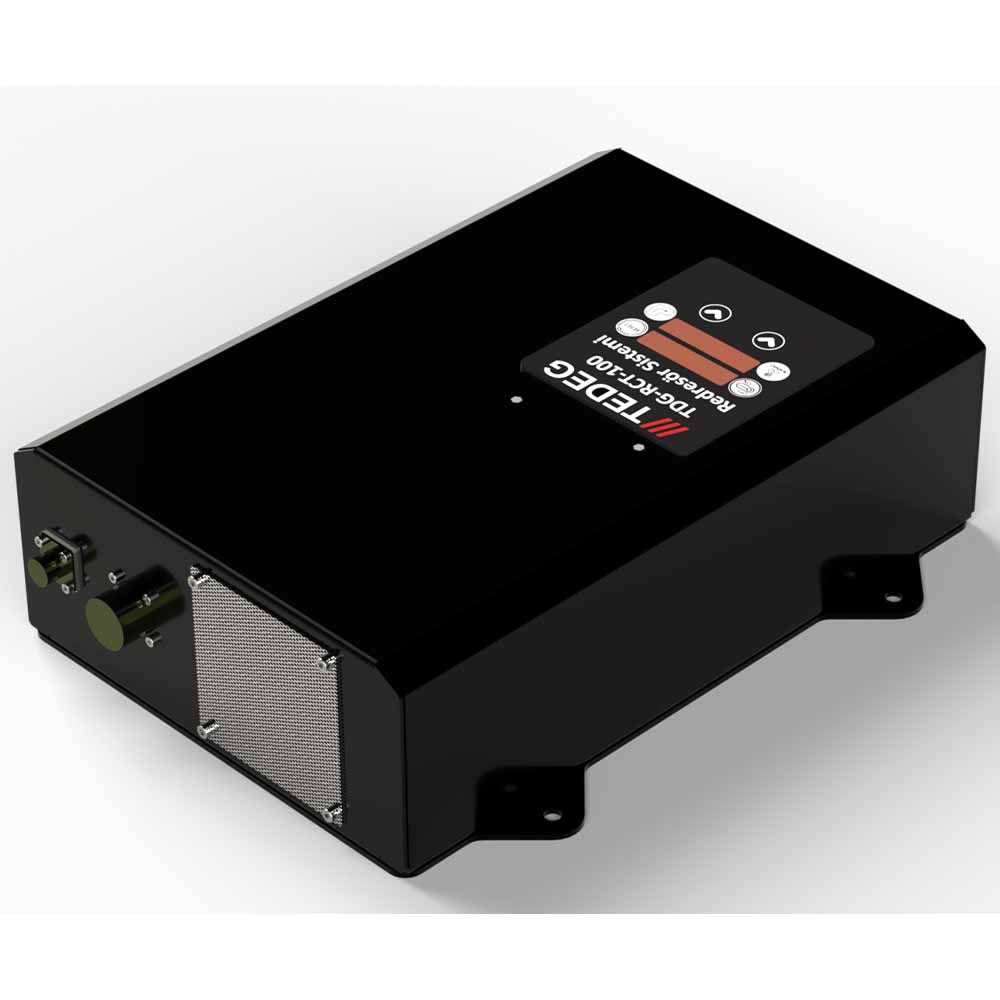
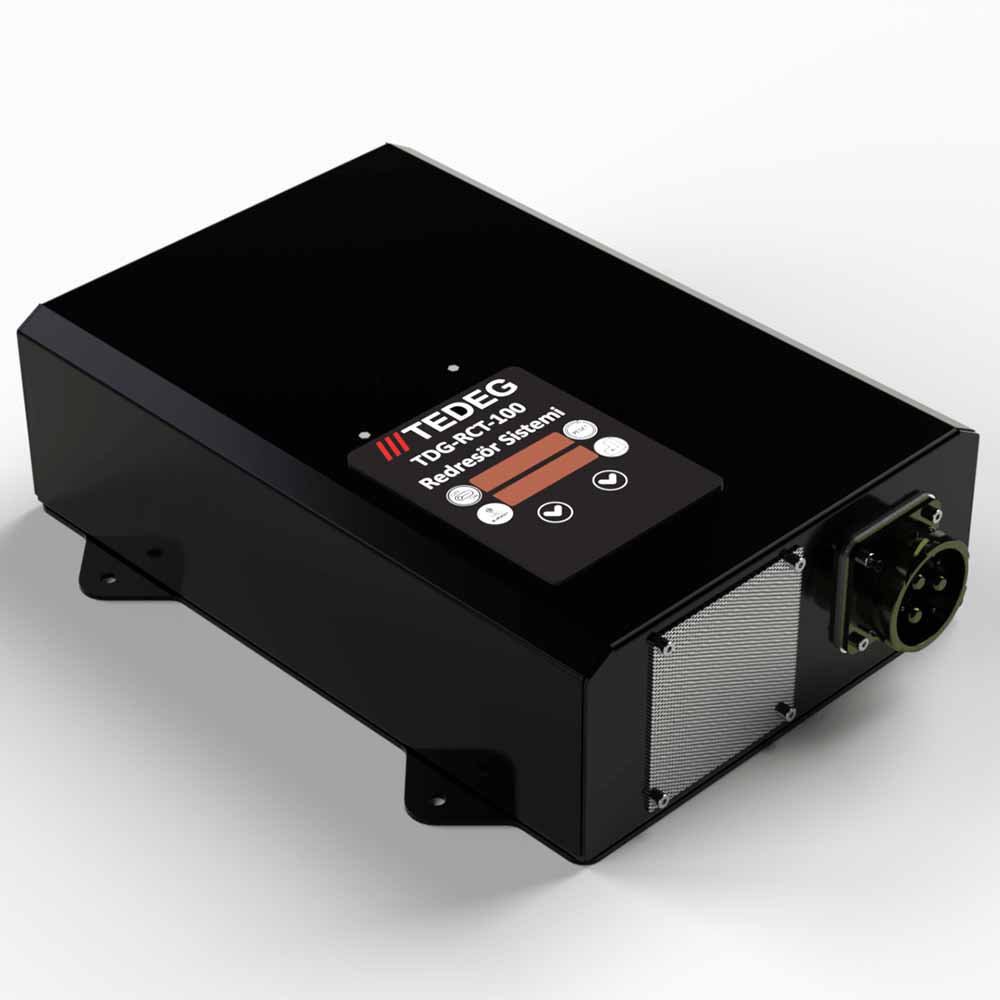
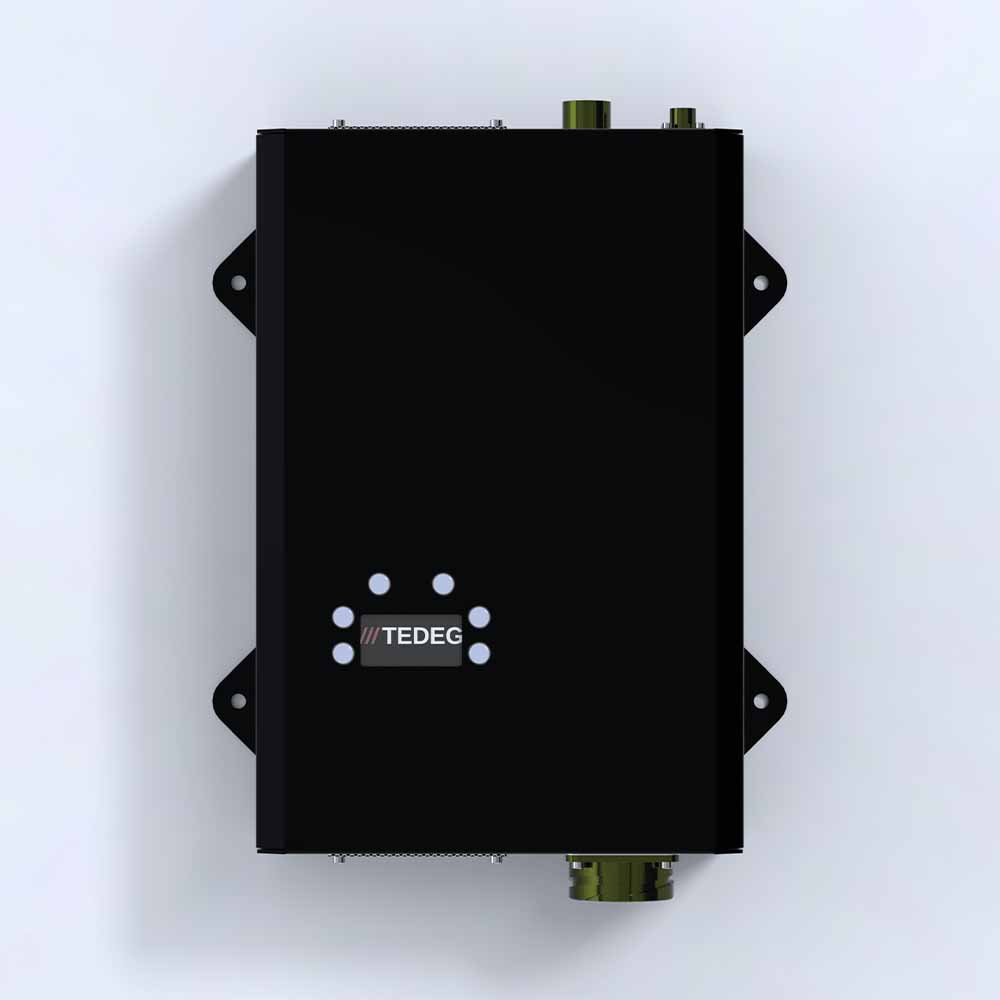
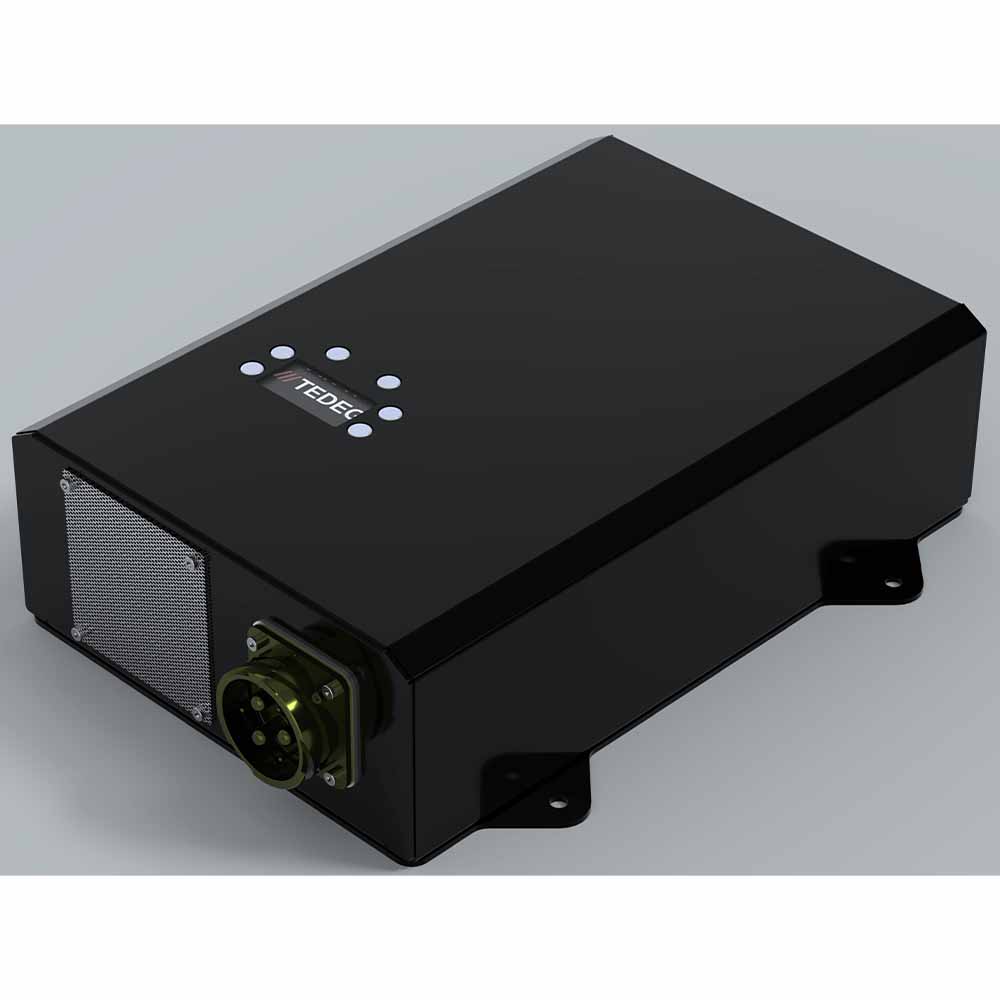
AC/DC Converter
There is a visual and voised alert for high voltage error, short circuit error, battery charging error and Converter error.
When engine starts, Converter stops running automatically.
Able of converter is at least 5 meter long and transportable.
With Battery Temperature Reading feature, Converter can adapt the charging current automatically and stop the operation if necessary. After the operation, Converter is shut down automatically.
It could be assembled as a DC power supply or battery charger.
Converter could supply 80A in DC mode independent from engine.
In battery charging mode it could charge all the batteries simultaneously.
Information Form
- Description
Description
Purpose
The CNV2-A AC/DC converter can be used as a part of the battery management system in a military vehicle. This device converts 220 V AC grid power to 24 V DC to provide the required power for the vehicle’s 24 V DC system. As a result, the electronic equipment and systems in the vehicle can be directly powered from this power source. Additionally, it can also be used to monitor the state of charge of the batteries, thereby improving their lifespan and performance.
Where to use
The CNV2-A AC/DC converter can be used in various applications within the military sector. For example, it can be used in armored vehicles, fighter planes, unmanned aerial vehicles (UAVs), and submarines. It can also be used in field hospitals, mobile logistics units, and military bases. This device plays a critical role in powering many different types of military equipment, and is an important component for ensuring the reliability of military operations.
Types
There are various types of CNV2-A AC/DC converters, which are typically classified based on factors such as output voltage, power, and efficiency. For example, some CNV2-A converters may have a power rating of 50 watts, while others may be high-powered models capable of up to 5000 watts. Additionally, some models have a fixed output voltage, while others offer adjustable output voltages. They also differ in terms of efficiency; some are more efficient than others, with some operating at lower levels of efficiency. Therefore, it is important to select the right model that matches the usage and requirements.
Features
Basically, redressors are electronic devices used for turning AC voltage into DC voltage. They get the alternating electric voltage through their inlet and give that out at requested DC voltage according to their technical specifications through their outputs.
• It can be mounted on the vehicle as DC power supply and battery charging device.
• Being mounted on the vehicle, it can be used as both battery charging device and direct current supply source at the same time with 220 VAC mains power.
• When vehicle engine is started redressor system automatically disengages.
• It gives audible and visual alarms in case of high current, high voltage, and high temperature errors.
• Redressor is shut down in case of short circuit.
• Thanks to battery temperature measurement feature, it has the feature of adjusting charging current automatically according to battery temperature.
Test Standarts
The test standards for Battery Management Systems (BMS) AC/DC Converters can vary depending on the manufacturer and industry. However, some common test standards include:
- MIL-STD-810: This standard is used to determine the ruggedness of equipment used in military environments under environmental stress conditions. The durability of BMS AC/DC converters against factors such as temperature, humidity, vibration, shock, and other environmental factors can be measured using this standard.
- MIL-STD-704: This standard determines the performance requirements for power sources used in aircraft. This standard can be used to verify that AC/DC converters provide appropriate voltage, frequency, and waveform.
- DO-160: This standard determines test requirements for airline equipment and systems. AC/DC converters are tested for their ability to withstand environmental factors such as electromagnetic compatibility (EMC), shock, vibration, temperature, and humidity.
- IEEE 112: This standard provides information on the electrical performance, reliability, and efficiency of DC-DC and AC-DC converters. This standard can be used to measure the output voltage, current, and efficiency of AC/DC converters.
In addition to these test standards, manufacturers typically create their own internal test procedures. These procedures are designed to determine the performance of a specific AC/DC converter and can be tailored to meet customer requirements.
What does it do
AC/DC converters are important components used in a variety of military applications. These include:
- Military vehicles: Military vehicles often contain multiple battery packs, each of which is managed with AC/DC converters. These converters can provide connectivity between different voltage levels and also supply the DC power required for signal processing and control systems.
- Intelligence, Surveillance, and Reconnaissance (ISR) systems: These types of systems collect and analyze data from satellite connections or other sources. The electronic devices used in these systems often have DC power sources, which are supplied by AC/DC converters.
- Communication systems: Military communication systems may require different voltage levels to be used by different devices. AC/DC converters can be used to correct voltage differences between these devices.
- Solar energy systems: Military bases and camps produce energy in an environmentally friendly manner using solar energy systems. In these systems, DC power from solar panels can be made usable with AC/DC converters.
These are just a few examples, as there are many different military applications that use AC/DC converters. It is important to test the reliability and performance of these devices in the military sector.

